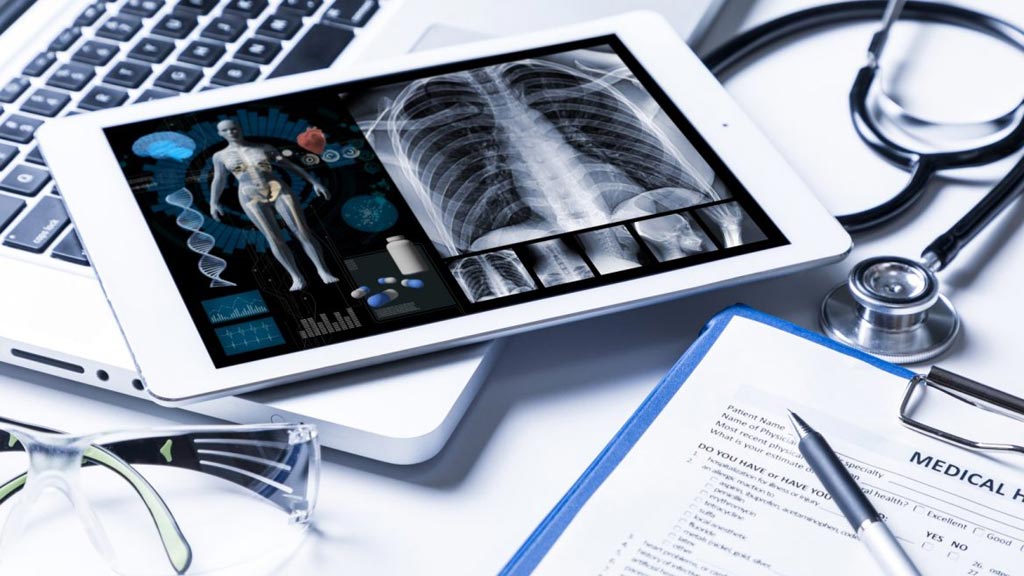Chest X-Rays of COVID-19 Patients Have High Likelihood of Predicting Positive RT-PCR Test Results
By MedImaging International staff writers
Posted on 16 Nov 2020
A new analysis has revealed that using a structured approach for chest X-rays of suspected COVID-19 patients increases the possibility of predicting positive RT-PCR testing results and can be useful in identifying new cases of COVID-19.Posted on 16 Nov 2020
Given the uncertainties surrounding the role and clinical utility of chest radiography in the early evaluation of patients with suspected COVID-19 pneumonia, researchers at the University College Dublin (Dublin, Ireland) carried out a study to construct a detailed description of a structured approach to reporting chest X-rays in patients with suspected COVID-19 pneumonia. The study also aimed to evaluate the diagnostic performance of chest radiography compared to RT-PCR.

Illustration
The study involved 590 patients suspected of COVID-19 who had attended a hospital emergency department and underwent both a portable chest radiograph (CXR) and a RT-PCR test for presence of SARS-CoV-2 on initial assessment. Patients were suspected of COVID-19 if they presented with symptoms of an acute respiratory infection, (including fever, shortness of breath and cough) or a fever of unknown cause. Serial RT-PCR was completed if the initial result was negative, at intervals of one day or more, if deemed required by clinicians. For patients with multiple RT-PCR assays, a positive result on an assay within seven days of the initial swab was adopted as confirmation of diagnosis. Patients who had a positive RT-PCR more than seven days after their initial assay were excluded from analysis. Patients underwent a CXR if they were suspected of COVID-19 and had moderate to severe symptoms requiring admission for treatment.
The researchers found that found that using a COVID-specific structured approach to interpretation, a CXR designated as High Suspicion or Characteristic in a patient presenting to the emergency department with clinically suspected COVID-19 pneumonia correlated with a very high likelihood of a positive RT-PCR. The team recommends confirmation with RT-PCR but believes that the positive predictive value and specificity of a positive chest radiograph merit a presumptive diagnosis of COVID-19 until the RT-PCR result becomes available. Furthermore, the researchers suggest that if initial RT-PCR is negative, in those with a positive CXR, particularly those with a characteristic appearance, those precautions should still be maintained and RT-PCR repeated.
“We have demonstrated very good agreement in the application of this structured approach in a single institution and feel that this practice is generalizable to other institutions,” wrote the researchers. “CXRs that are designated as Normal, Unlikely or Indeterminate are less useful in the initial patient evaluation but awareness of this finding is essential for clinicians. Given that CT of the chest has shown high sensitivity but low specificity, radiographs and CT may be complementary tests in diagnostically difficult cases. Lastly, CXRs have been shown to be useful in prognostication and in tracking disease progression.”
Related Links:
University College Dublin













